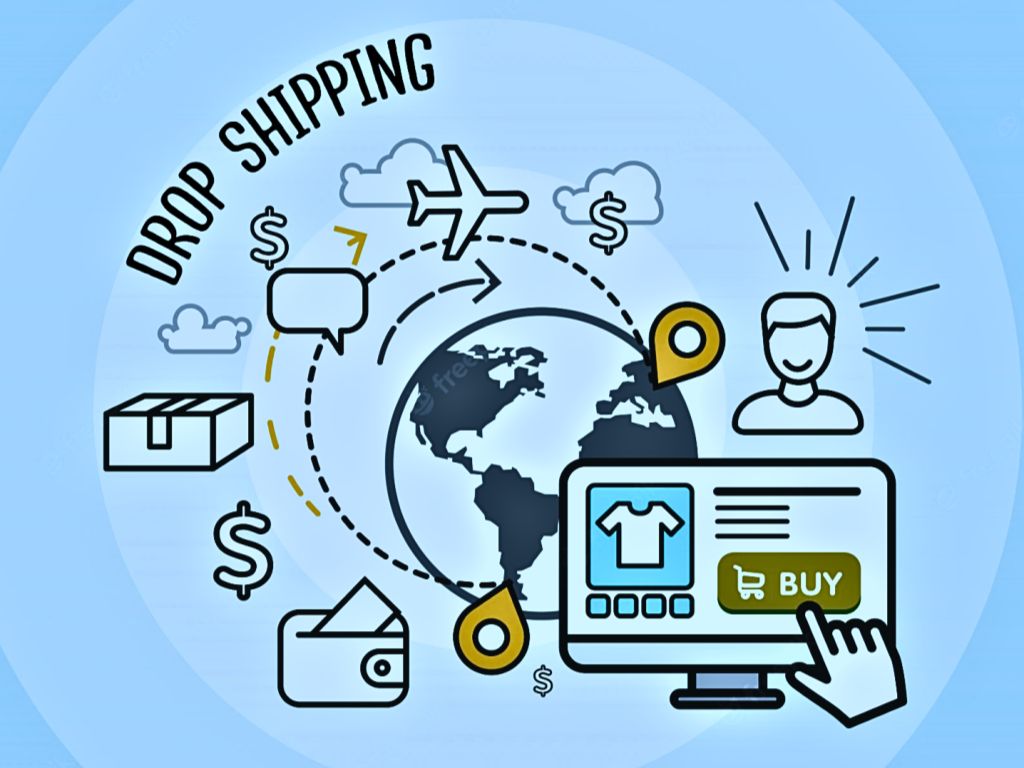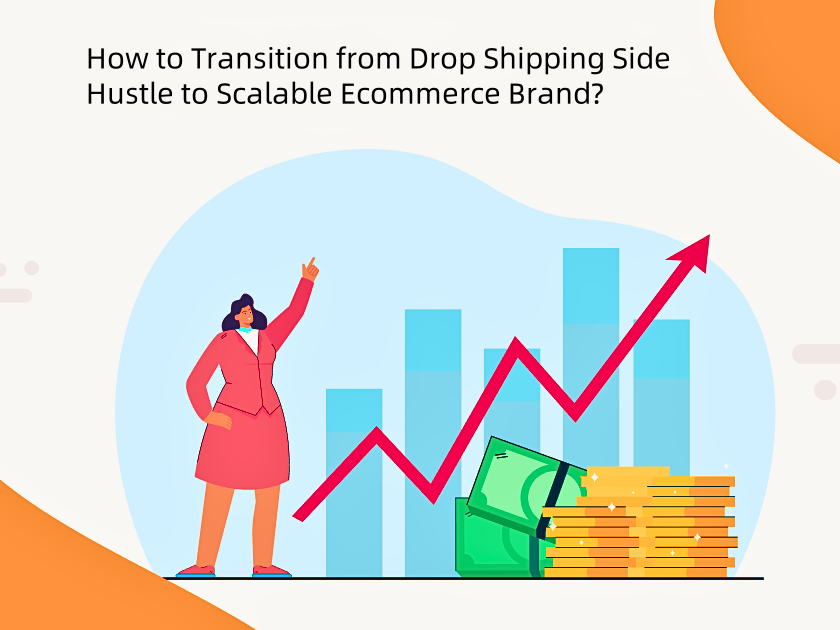How to Transition from Drop Shipping Side Hustle to Scalable Ecommerce Brand
Drop shipping has long been a popular way to start an ecommerce business. It lets you sell products without holding inventory—you take orders, and a supplier ships directly to customers. This low-risk model is perfect for testing ideas and earning extra income as a side hustle. But if you want to grow beyond a side gig, transitioning from drop shipping to a scalable ecommerce brand is the next step. A brand builds loyalty, controls quality, and creates long-term value—things a basic drop shipping store can’t do. Here’s how to make the shift successfully.
Start by Evaluating Your Drop Shipping Foundations
Before moving forward, take a hard look at your existing drop shipping business. What’s working? What’s not? This analysis will guide your transition.
First, identify your top-performing products. In drop shipping, you likely tested many items—focus on the 10–20% that drive most of your sales. These products have proven demand, which is key for building a brand. For example, if you sell home goods and your bamboo toothbrushes and reusable food wraps are bestsellers, these could form the core of your brand.
Next, study your customers. Who buys from you? What do they care about? Drop shipping often attracts broad audiences, but a brand needs a clear niche. If your drop shipping data shows most buyers are eco-conscious millennials, your brand can lean into sustainability. This focus helps you stand out beyond just selling products.
Also, note the pain points of drop shipping. Common issues include slow shipping, limited control over product quality, and low profit margins (since suppliers charge markup). These are the problems your brand will solve. For example, if customers complain about 3-week delivery times, your brand can offer faster shipping by holding some inventory.
Move from “Reseller” to “Brand” with a Clear Identity
A drop shipping store is a sales channel; a brand is a story and a promise. To transition, you need to build an identity that customers recognize and trust.
Start with a mission. Why does your brand exist? It shouldn’t just be to sell products. For example, if you drop ship fitness gear, your brand mission could be “Making home workouts accessible for busy parents.” This mission guides every decision, from product choices to marketing.
Choose a memorable name and visual style. Your drop shipping store might have a generic name, but a brand needs something unique. Make sure it’s easy to spell and reflects your mission. Pair it with a logo, color scheme, and packaging design that align with your audience. If your niche is eco-friendly products, earthy tones and recycled packaging reinforce your values.
Tell your story. Customers connect with brands that feel human. Share why you started—maybe you struggled to find affordable, sustainable kitchen tools, so you built a brand to solve that. Use your website, social media, and product pages to tell this story. Unlike a drop shipping store, which focuses only on products, your brand should make customers feel part of something bigger.

Take Control of Your Supply Chain
One of the biggest limits of drop shipping is reliance on third-party suppliers. To scale, you need more control over inventory, quality, and shipping. This doesn’t mean abandoning drop shipping entirely—you can mix models as you transition.
Start by holding inventory for your top products. Use your drop shipping data to predict demand, then order a small batch from your supplier. Store it in a fulfillment center (services like Fulfillment by Amazon or ShipBob work well for small brands). This lets you offer faster shipping (2–3 days instead of weeks) and reduces costs—buying in bulk lowers per-unit prices, boosting profit margins.
Vet suppliers carefully. In drop shipping, you might work with many suppliers, but a brand needs reliable partners. Visit factories if possible, or ask for product samples to check quality. Sign contracts that outline quality standards, delivery times, and minimum order quantities. A good supplier will grow with you—avoid those who cut corners, as poor quality will hurt your brand.
Consider private labeling. Instead of selling generic products (like every other drop shipping store), work with suppliers to add your brand name, logo, or unique features to products. For example, if you sell water bottles, a private label version could have your logo and a custom color. Private labeling makes products exclusive to your brand, reducing competition and letting you charge higher prices.
Build a Loyal Customer Base (Beyond One-Time Buys)
Drop shipping relies on one-time purchases, but scalable brands thrive on repeat customers. Loyalty turns small sales into steady revenue and reduces the cost of acquiring new customers.
Focus on customer experience. In drop shipping, you might overlook packaging or follow-up—fix that. Use branded packaging that excites customers when they unbox. Include a handwritten note or a small free gift (like a sticker with your logo). After delivery, send a personalized email asking how they like the product. Solve issues quickly—great customer service turns buyers into fans.
Create a loyalty program. Reward repeat customers with discounts, early access to new products, or points they can redeem. For example, “Earn 10 points for every $1 spent—100 points get you a free gift.” This encourages customers to come back instead of shopping around.
Engage with your audience. Drop shipping stores often ignore social media beyond ads, but brands use it to build community. Post content that helps your audience—tips, behind-the-scenes looks at your team, or customer stories. Host Q&As or live streams to connect directly. The more engaged your audience, the more likely they are to buy again and tell others about your brand.
Optimize Your Marketing for Long-Term Growth
Drop shipping marketing often relies on paid ads (like Facebook or Google Ads) to drive quick sales. While ads are still important for brands, you need a mix of strategies to scale sustainably.
Invest in organic traffic. Unlike drop shipping, which focuses on immediate sales, a brand benefits from long-term visibility. Start a blog with content your audience cares about—for example, if you sell baby gear, posts like “10 Tips for Traveling with a Toddler” attract organic traffic from Google. Use SEO (search engine optimization) to include keywords customers search for, so your site ranks higher.
Leverage email marketing. In drop shipping, you might collect emails but rarely use them. A brand should build an email list and send regular, valuable content—newsletters with product updates, exclusive discounts, or helpful tips. For example, “We just launched our new eco-friendly cleaning kit—here’s why it’s better than store-bought options.” Emails keep your brand top of mind and drive repeat sales.
Collaborate with influencers. Partner with creators who align with your brand values, not just anyone with followers. For example, if you sell sustainable fashion, work with eco-lifestyle bloggers. They can share honest reviews, which feel more authentic than ads. Micro-influencers (10k–50k followers) often have more engaged audiences than celebrities, making them a cost-effective choice.
Scale Smartly: Automate and Delegate
As a side hustle, you might handle everything yourself. But a scalable brand needs systems and a team to grow without burning out.
Automate repetitive tasks. Use tools to streamline order processing, inventory tracking, and email marketing. For example, apps like Shopify Flow can automatically send a “thank you” email when an order ships, or alert you when inventory is low. This frees up time to focus on big-picture work, like product development.
Hire help when needed. You don’t need a big team right away, but outsourcing tasks you’re not good at (or hate doing) speeds up growth. Start with a virtual assistant for customer service, a graphic designer for social media content, or a developer to improve your website. As sales grow, add roles like a marketing manager or supply chain coordinator.
Set goals and track metrics. Drop shipping success might be measured by monthly sales, but a brand needs to track loyalty (repeat purchase rate), customer lifetime value (how much a customer spends over time), and profit margins. Use tools like Google Analytics or Shopify Reports to monitor these. Set clear goals—for example, “Increase repeat purchases from 10% to 20% in 6 months”—and adjust strategies as needed.
FAQ
Can I still use drop shipping when building a brand?
Yes. Many brands mix drop shipping for low-demand products with holding inventory for bestsellers. This reduces risk—you don’t tie up cash in slow-moving items, but still offer fast shipping for popular ones.
How much money do I need to transition from drop shipping to a brand?
It depends on your products, but plan for at least $5,000–$10,000. This covers inventory, branding (logo, packaging), and initial marketing. Start small—use profits from your drop shipping side hustle to fund the transition.
How long does the transition take?
Most brands take 6–12 months to shift from drop shipping. Rushing can lead to mistakes (like poor inventory planning), so focus on steady progress.
Will I lose customers during the transition?
Some might, but loyal customers will appreciate better quality and service. Communicate changes clearly—for example, “We’re upgrading to faster shipping! Here’s what to expect.”
How do I know if my brand is scalable?
Look for growing repeat purchase rates, consistent profit margins, and demand for new products in your niche. If customers ask for “more like this,” you’re on the right track.


